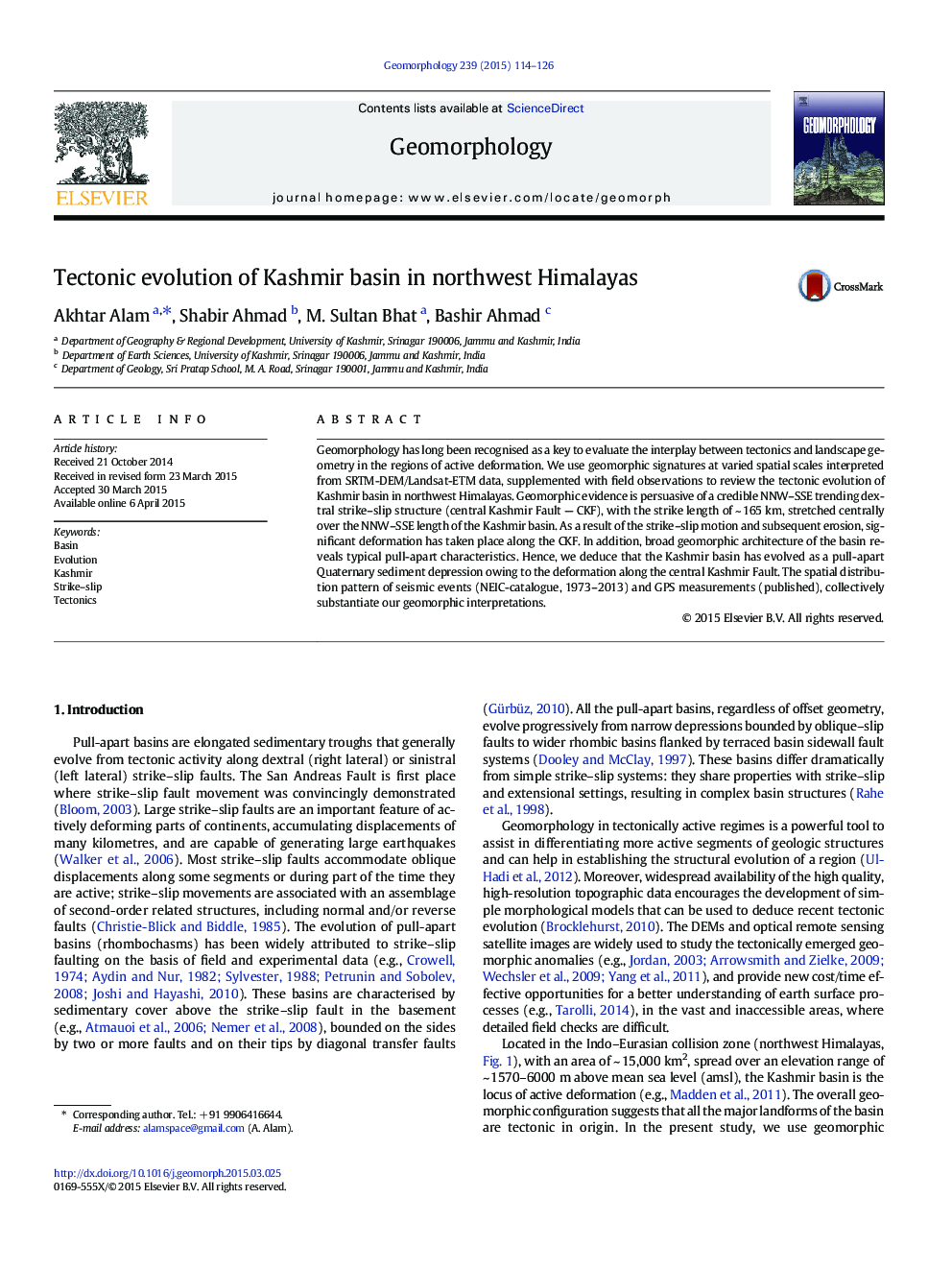| کد مقاله | کد نشریه | سال انتشار | مقاله انگلیسی | نسخه تمام متن |
|---|---|---|---|---|
| 4684287 | 1635410 | 2015 | 13 صفحه PDF | دانلود رایگان |
• Geomorphic evidence at varied spatial scales indicates a credible NNW–SSE trending subsurface structure in Kashmir basin.
• Paired offsetting of drainage divide and higher order rivers (interbasin) is suggestive of the dextral strike–slip structure.
• Broad geomorphic architecture of the basin reveals significant deformation owing to active pull-apart displacement.
Geomorphology has long been recognised as a key to evaluate the interplay between tectonics and landscape geometry in the regions of active deformation. We use geomorphic signatures at varied spatial scales interpreted from SRTM-DEM/Landsat-ETM data, supplemented with field observations to review the tectonic evolution of Kashmir basin in northwest Himalayas. Geomorphic evidence is persuasive of a credible NNW–SSE trending dextral strike–slip structure (central Kashmir Fault — CKF), with the strike length of ~ 165 km, stretched centrally over the NNW–SSE length of the Kashmir basin. As a result of the strike–slip motion and subsequent erosion, significant deformation has taken place along the CKF. In addition, broad geomorphic architecture of the basin reveals typical pull-apart characteristics. Hence, we deduce that the Kashmir basin has evolved as a pull-apart Quaternary sediment depression owing to the deformation along the central Kashmir Fault. The spatial distribution pattern of seismic events (NEIC-catalogue, 1973–2013) and GPS measurements (published), collectively substantiate our geomorphic interpretations.
Journal: Geomorphology - Volume 239, 15 June 2015, Pages 114–126
